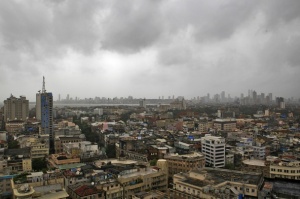 From Atlantic Cities writer Mark Bergen: "BANGALORE, India -- Ascend to the top floor of the UB Tower downtown, and you can nearly see the city's full expanse from all sides. The skyscraper, the centerpiece of the five-year-old luxury shopping mall UB City, is one of the city's tallest structures. It stands 420 feet.
"More than 100 buildings rise higher in both New York and Hong Kong, though each is less populous. Cities in China and southeast Asia rise high, but Indian ones did not. Most grew like Bangalore: outwards and compact. It leads to a natural question: Why aren't Indian cities that tall? But there are others who pose a very different query: Why should they be?
From Atlantic Cities writer Mark Bergen: "BANGALORE, India -- Ascend to the top floor of the UB Tower downtown, and you can nearly see the city's full expanse from all sides. The skyscraper, the centerpiece of the five-year-old luxury shopping mall UB City, is one of the city's tallest structures. It stands 420 feet.
"More than 100 buildings rise higher in both New York and Hong Kong, though each is less populous. Cities in China and southeast Asia rise high, but Indian ones did not. Most grew like Bangalore: outwards and compact. It leads to a natural question: Why aren't Indian cities that tall? But there are others who pose a very different query: Why should they be?
S. Vishwanath, an urban planner, lives in Vidyaranyapura, a neighborhood in the city's far northwest with rows of squat, single-family homes and buzzing shops. He would like every neighborhood to resemble his. India, he claims, is best suited for 'poly-nodal' urbanism -- a bunch of self-contained cities within the city. 'People won't have to travel outside of two or three kilometers,' he explains.
"That vision is a relief for anyone who has braved Bangalore rush hour. But he is less concerned with traffic than resources, particularly water. Tall buildings, where water has to move up several stories, can have wider ecological footprints. 'While the low-rise consumes more land, the high-rise consumes more energy,' says Sathya Prakash Varanashi, an architect who has worked in the city for two decades.
"Both men do, however, wield judgment on the impact vertical growth has on society. They see shorter, dense structures as more conducive to public life. 'The strength of India has always been that there is mixed land use in every part of town,' argues Vishwanath. Residents dwell alongside shop owners, street vendors and the legions of working poor." Full article here.
